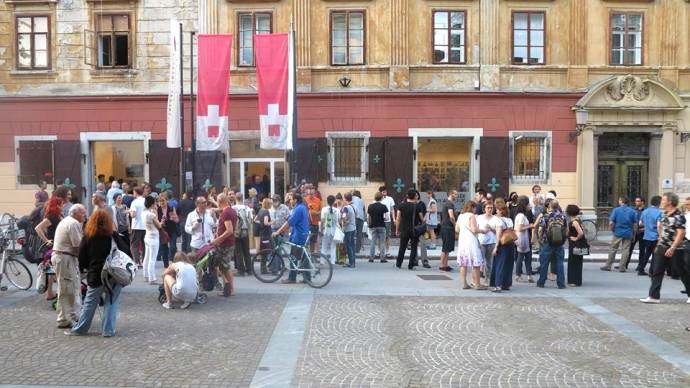Trg francoske revolucije, or French Revolution Square, marks one end of the pedestrianised area in central Ljubljana, is just a short walk from Zvezda Park (aka Kongresni or Congress) and the river, and contains a wealth of cultural delights, including lots of Plečnik.
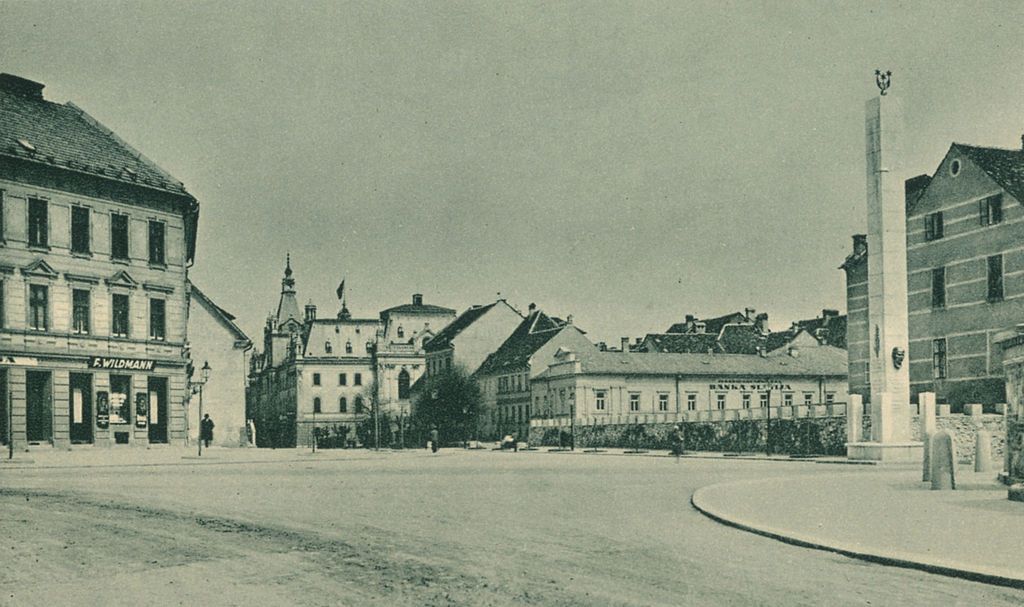
A view of the square in 1935. Photo: Wikimedia
The square has been around since 1793, when it was known as Križniški trg, named after the German Knights who lived there. They also founded the monastery that now houses the Križanke Summer Theatre, the last major work of Jože Plečnik, a name you’ll hear again and again on your trip through Ljubljana, and especially in this part of town, as he was responsible for remodeling the square in the 1930s, and designed the red brick and stone library that dominates the area.
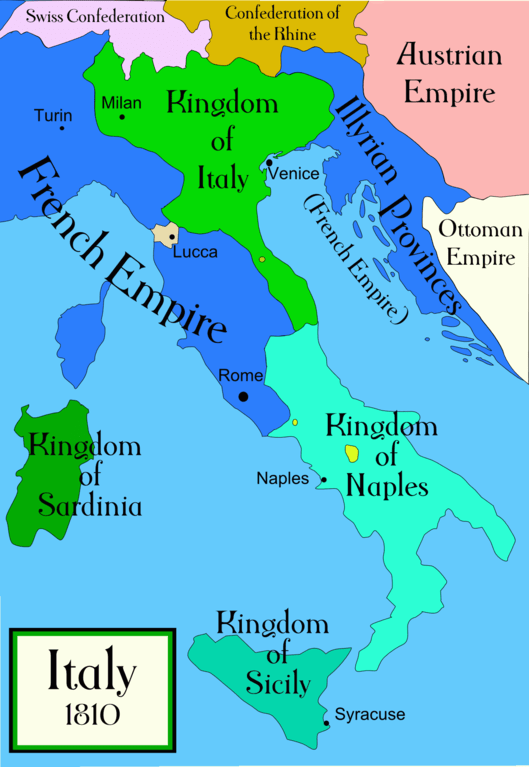
Map showing the Illyrian Provinces. Wikimedia
The focus of this little square is the Napoleon Monument, marked on the map at the end of this text and, erected in 1929 to mark France’s Illyrian Provinces. This features sculptures of two faces, Napoleon and that of Illyria, both produced by Lojze Dolinar.

On one side of this is a couple of cafés, Le Petit Café and a branch of Bazilika, both with outside seating that make them among the nicest spots to sit and watch the world go by in the summer, away from the bustle of the riverside and among a self-selected crowd of culture lovers. Le Petit Café is French-style café with a good menu, warm atmosphere and lots of room inside in the colder months, while Bazilika Bistro focuses on health food that also delicious, and both places cater to vegans and vegetarians.
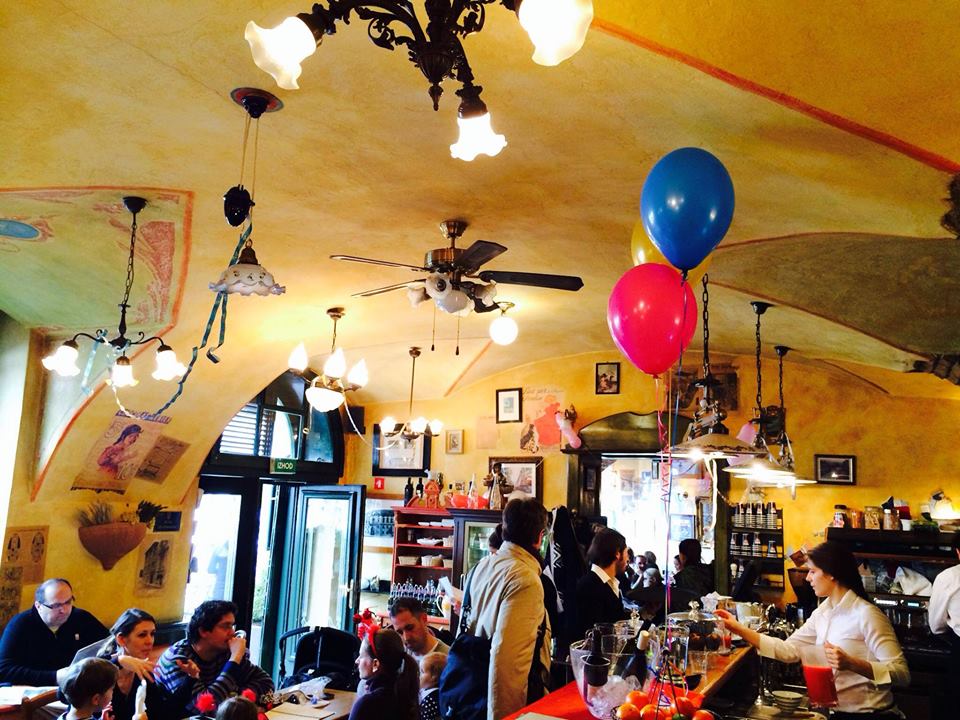
Inside the Petit Café: Photo: The café's Facebook page
Along the same side of the street, and on the right of these two cafés, is the Mladinsko Sales Gallery, where you can buy tickets for shows by the Slovensko mladinsko gledališče (The Slovenian Youth Theatre), as well as browse or purchase books, CDs, posters and other items related to performances. This is our first sign of the underlying cultural nature of this square, and far from the last. To the left of the two cafés, and just around the corner, at 2 Rimska cesta, is one of the best art supply stores in town, known simply as Art Ljubljana. To the right of the two cafés, on the first street you meet, Gregorčičeva ulica, there's the Glej Theatre, with a programme here, and inside the courtyard beside this is the little Pocket Teater (sic).

A show at Galerija Vžigalica. Photo: the gallery's Facebook
It’s here we’ll note that an art and design high school is also in this neighbourhood, while another part of the sprawling University of Ljubljana, the Faculty of Arts (Filozofska fakulteta), can be found not far away. Indeed, your never far from something educational in Ljubljana. The city itself has a population of around 280,000, with the university having over 60,000 students, the main reason for the youthful look of the town in term time, a youthful vigour that becomes especially intense in this area.
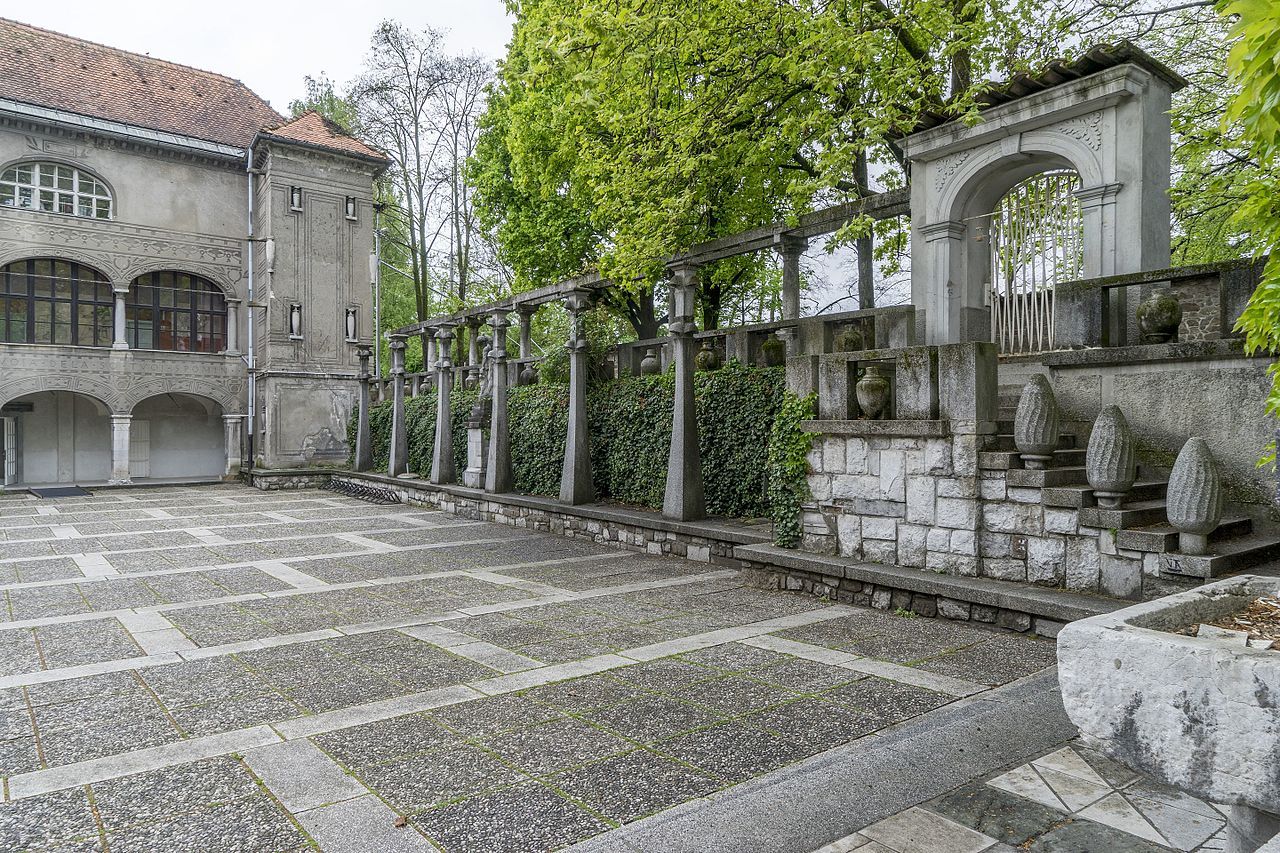
A corner of Križanke. Wikimedia
Moving counter clockwise and heading down into the square, we come across the main event, at least when there’s a show on, Križanke. Originally a monastery, this was remodelled by Jože Plečnik between 1952 and 1956, and is the architect’s last major work. A visit is especially rewarding if you’ve been paying attention to some of his other works in town – the Triple Bridge, Market Arcades, Cobbler’s Bridge (to my mind, the prettiest), and more – as you’ll see elements reused and reworked, a mix of styles that turn from timeless to anachronistic, the shock of the new and the strength of tradition. The site’s full name is the Križanke Summer Theatre, and between April and October it's the site of much of the Ljubljana Fetival, with jazz, pop/rock and classical performances. Weather permitting, there’s not a better venue in town. The Festival's official website is here.
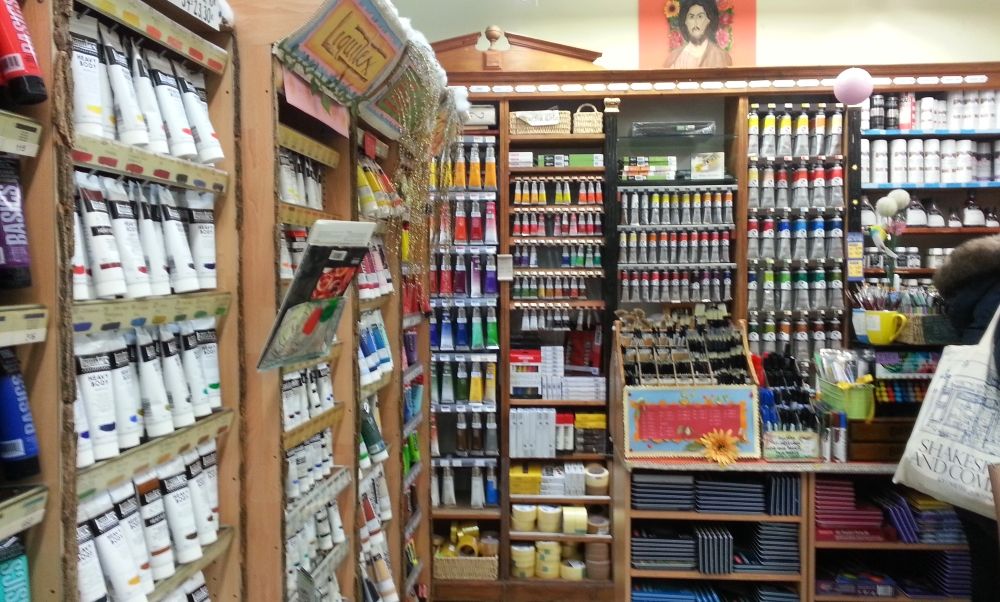
Around the corner, at 2 Rimska cesta, is one of the best art supply stores in town. Photo: JL Flanner
Moving down the square we come to the City Museum, housed in what was once the Auersperg Palace (Turjaška palača), the which has a permanent display of items showing the history of the city, from Roman times to today, as well as themed exhibitions. Details of shows and events can be found here, while our write-up of the exibition on Ljubljana is here.
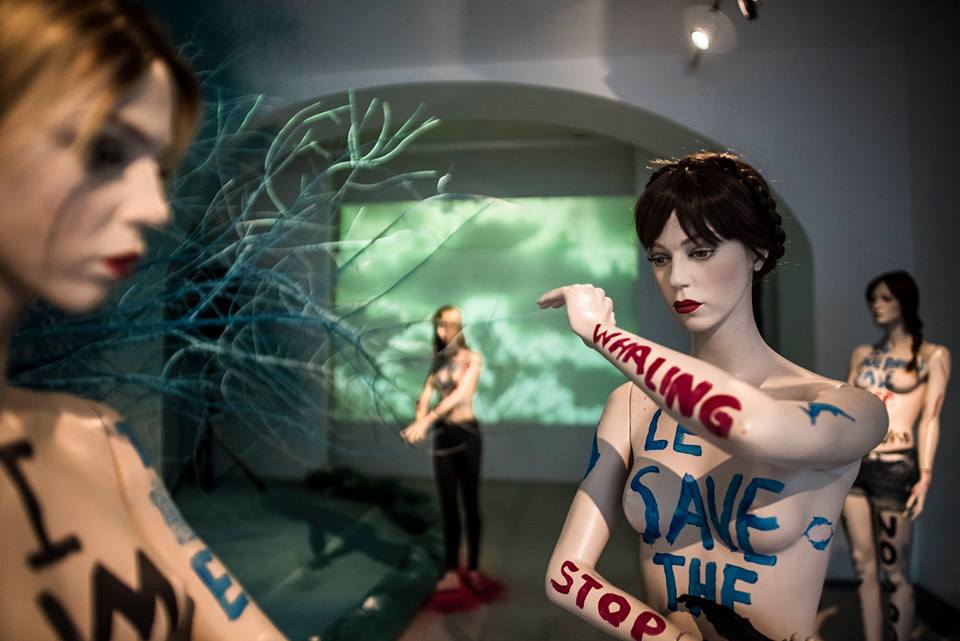
Galerija Vžigalica
The entrance to the City Museum is on Gosposka ulica, and you can follow that back to the centre of town, passing some nice bars and restaurants, or keep walking downhill on one of the lanes that’ll take you to the Breg Embankment. But we’ll stay in the square, and moving back uphill there’s the Galerija Vžigalica (Match Gallery). This has some interesting and often challenging shows, and is always worth a look. It also played host to the best small gallery opening I’ve been to in town, where I overhead the following: “I was a party, the host was a designer. They put their clothes on the models and if you bought something they took it off. That’s how I got these pants.” It’s that kind of place, and the gallery’s Facebook page has details of what's now on display.

The back of the library, as viewed from Novi trg. Wikimedia
Just up from this is Hartman, for my money the best store for classical music in the city, selling both CDs and scores. The location is an apt one, not only because it’s opposite Križanke, but also because the Music Academy is not far away, just on the other side of the last building we’ll note in this quarter, Plečnik’s National and University Library of Slovenia. This monumental work is well worth walking around, both inside and out, with the outer walls a mix of red brick and grey stones, recycled from the city’s older buildings.

